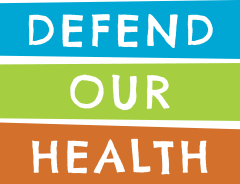U.S. Senate: Follow the House Path to Chemical Reform, Healthy Homes
July 15, 2015 | Uncategorized |
Guess who approved the safety of all those chemicals that make up the latest stuff you just brought home from that big box retailer? Nobody. That’s right!
Nearly 40 years ago, Congress first passed the Toxic Substances Control Act (TSCA). But the law proved toothless. The U.S. Environmental Protection Agency (EPA) couldn’t even ban asbestos, which still kills 10,000 Americans every year. Some 62,000 industrial chemicals in commerce were “grandfathered in” without a safety review or testing for health hazards. Only 5 have been partially regulated.
Guess who approved the safety of all those chemicals that make up the latest stuff you just brought home from that big box retailer? Nobody. That’s right!
Nearly 40 years ago, Congress first passed the Toxic Substances Control Act (TSCA). But the law proved toothless. The U.S. Environmental Protection Agency (EPA) couldn’t even ban asbestos, which still kills 10,000 Americans every year. Some 62,000 industrial chemicals in commerce were “grandfathered in” without a safety review or testing for health hazards. Only 5 have been partially regulated.
These chemical follies are now well known. People are widely exposed to toxic chemicals that escape from everyday products, plastics, coatings and other materials. And the scientific evidence steadily mounts. Exposure to toxic chemicals harms brain development, increases cancer risk, messes with human reproduction, wreaks hormone havoc, triggers asthma and allergies, and more.
Ten years ago, I helped launch the campaign to fix our broken federal chemical safety system. We named our national coalition for what we wanted: Safer Chemicals, Healthy Families. After slugging it out with the chemical manufacturers for a decade, we finally built a Congressional consensus to support modest TSCA reform. But we’ve been forced to lower our sights quite a bit. Acceptable federal reform now simply aims to do some good and to do no harm.
But even that moderate policy outcome remains uncertain thanks to the over-reaching greed of the chemical industry, which still insists on reform on its terms.
On the good news front, both bipartisan TSCA reform bills moving through Congress would take the handcuffs off of EPA. Both bills require the federal agency to restrict the use of chemicals that threaten the health of children, pregnant women and other vulnerable groups. Health concerns must drive decision-making.
However, the Senate bill (S. 697) remains controversial, especially since it would block state-based chemical restrictions years before EPA takes a final action on a chemical. Such federal preemption would chill leadership in Maine, California, Washington, Vermont, Oregon, New York and many other states who have enacted safer products laws. The bill also raises a higher hurdle than current law, making it harder for states to gain a waiver from federal preemption.
Originally drafted by the chemical industry nearly 3 years ago, the Senate bill has been patched and repaired so many times that it’s a lengthy, convoluted, ambiguous mess. The Senate bill would further weaken current law by requiring EPA to set aside claimed “low priority” chemicals without a safety determination. It would also make it harder for EPA to halt imported products that contain toxic chemicals banned in the United States – a giveaway to businesses with overseas production.
This summer, the U.S. Senate has a choice. Take up S. 697, which passed a Senate Committee on a 15-5 vote despite significant opposition from states, health professionals, public health advocates, environmentalists, labor unions and sustainable businesses.
Or instead, take up the House bill (HR 2576), drafted as a true compromise and approved by an overwhelming 398-1 vote after unanimous Committee approval.
The House bill is concise, clearly written, stripped down TSCA reform that was not drafted by the chemical industry. Unlike the Senate bill, it imposes minimal preemption on the States. There’s no “low priority” set aside. There’s no toxic import giveaway. The House bill has its flaws, however, which still need fixing. (See how the two bills compare).
We’ve joined the call to Senate Majority Leader Mitch McConnell to take up the House bill with perfecting amendments, rather than the controversial Senate bill that we oppose. (See our letter to Senate leaders). The Senate could handily finish TSCA reform by tweaking HR 2576 to clarify the pace of EPA action on chemical safety assessments. Such clarifying amendments to the House bill would ensure that 10 chemicals per year was a mandatory schedule for safety review, and that industry fees would fund EPA’s chemical program as proposed in the Senate bill.
The House strategy offers the least contested, shortest path to success. Both bills are supported by industry, so the House bill offers the broadest path to acceptable reform. The House path to TSCA reform gives EPA a fighting chance to drive the worst toxic chemicals out of products before they harm your family. And if the feds haven’t acted yet, your state will still have your back.
That’s why the Senate should follow the House path. It leads to healthier homes.
